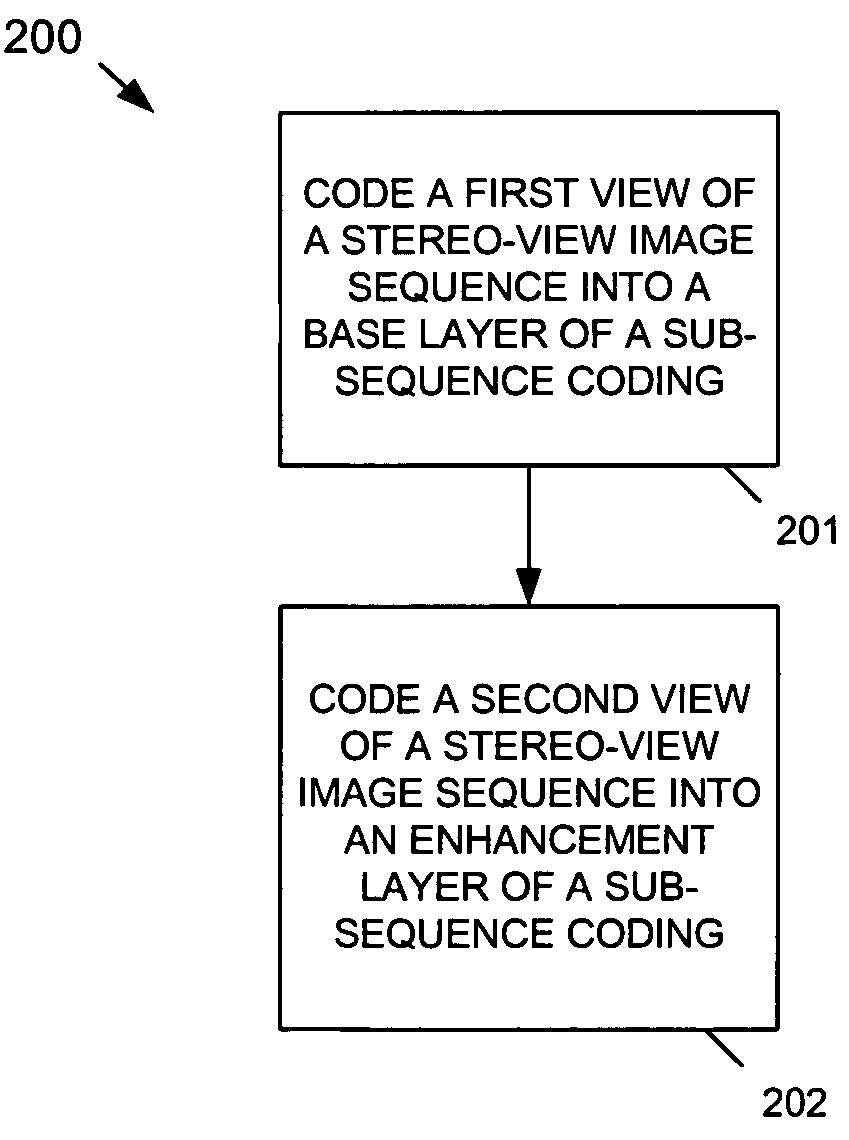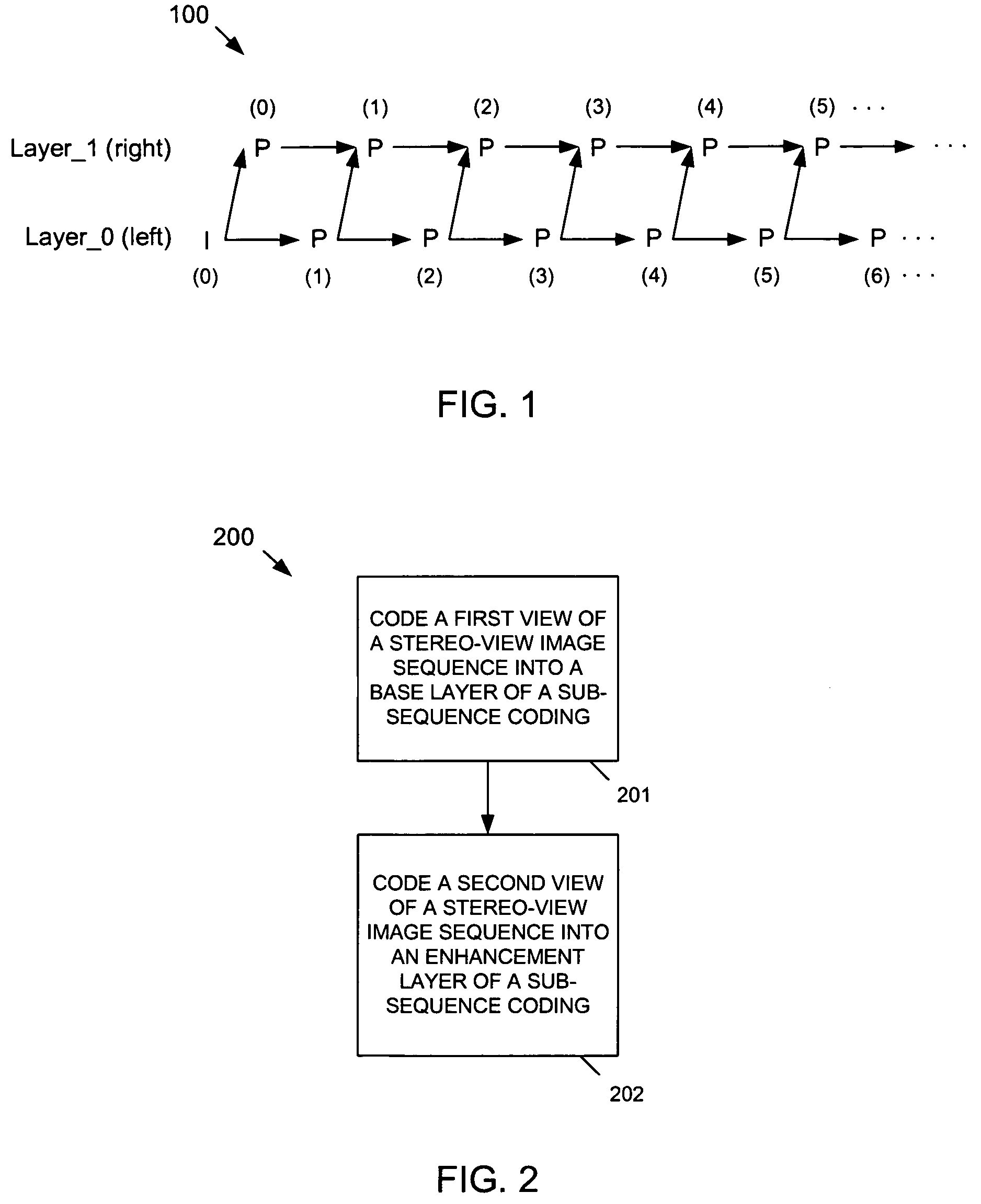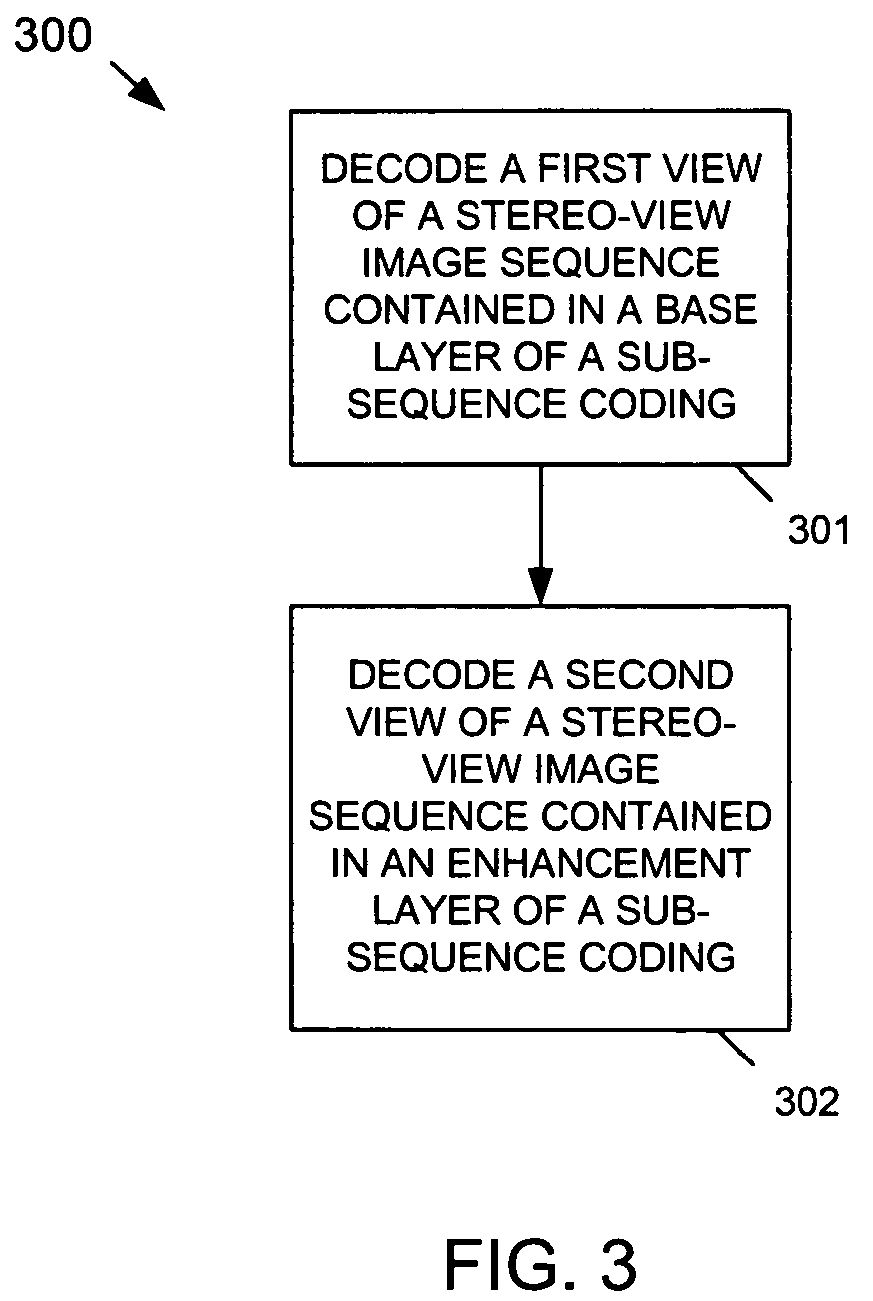3D video coding using sub-sequences
a video sequence and sub-sequence technology, applied in the field of video compression, can solve the problems of loss of view-scalable functionality, poor coding efficiency of straightforward techniques, and relatively high complexity of composite frames, and achieve flexible scalability and better coding efficiency
- Summary
- Abstract
- Description
- Claims
- Application Information
AI Technical Summary
Benefits of technology
Problems solved by technology
Method used
Image
Examples
Embodiment Construction
[0024]The present invention provides a technique of coding multiple-view video frames as an H.264-based sub-sequence coding in order to provide flexible scalability and an improved compression ratio.
[0025]In the International Telecommunication Union (ITU-T) video coding standard, referred to as MPEG-4 Part 10 AVC / H.264, a picture is referred to as a “frame.” Each frame of video sequence can be coded as one of two types—an Intra frame or an Inter frame. Intra frames, or I-frames, are coded in isolation from other frames by compressing data based on similarities within each region of a single frame. I-frames are coded without referring to reference frames and can be decoded independently of any other picture in the video sequence. An I-frame provides an access point for random access to stored digital video content and can be coded only with slight compression.
[0026]Inter frames are coded based on similarities in a region of one frame and a region of successive frames. Inter frames in...
PUM
 Login to View More
Login to View More Abstract
Description
Claims
Application Information
 Login to View More
Login to View More - R&D
- Intellectual Property
- Life Sciences
- Materials
- Tech Scout
- Unparalleled Data Quality
- Higher Quality Content
- 60% Fewer Hallucinations
Browse by: Latest US Patents, China's latest patents, Technical Efficacy Thesaurus, Application Domain, Technology Topic, Popular Technical Reports.
© 2025 PatSnap. All rights reserved.Legal|Privacy policy|Modern Slavery Act Transparency Statement|Sitemap|About US| Contact US: help@patsnap.com



